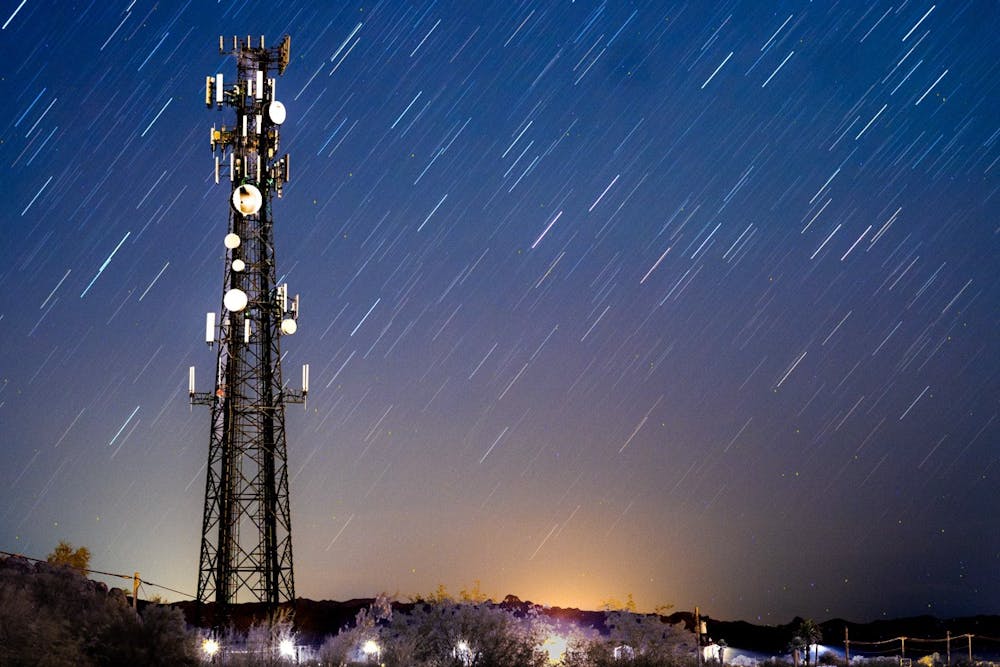Researchers at ASU, Johns Hopkins University and the University of Toronto released a study this month giving new insight into the process of how galaxies grow.
Although the classic image of a galaxy is familiar, most people don't know how they come about or grow. Sanchayeeta Borthakur, an assistant professor in the School of Earth and Space Exploration and contributor to the study, said we can only see 0.01% of the galaxy while the rest remains hidden, waiting to be studied.
Christopher Dupuis, a graduate student studying astrophysics, recently led the study along with Borthakur, research scientist Rolf Jansen and astrophysics Ph.D. candidate Mansi Padave of the School of Earth and Space Exploration as well as Timothy Heckman of Johns Hopkins University and Rachael Alexandroff of the University of Toronto, to determine what makes galaxies grow.
The team used observations and data to look at a gas that's not visible to the naked eye in order to better understand how galaxies grow.
"This gas is how we think galaxies grow over time," Dupuis said.
The team knew this galactic gas was located in the "circumgalactic medium," a halo that surrounds a galaxy, but the new study and research technique give evidence that the gas travels into the galaxy's extended disks.
When the gas travels through a galaxy's extended disks, it will eventually turn into a new star, Dupuis said.
Dupuis said this was his first major paper that he authored and wrote the manuscript for, and his advisor's guidance started him on the project.
"When I first got here, my advisor showed me the spectrum that is referenced a lot in the paper, and she told me we can do something interesting with it and get a paper out of it," Dupuis said. "From there, I figured out everything that was in the paper."
The study started in early 2019 and was published this month. "It was a long process to get the paper out," Dupuis said.
Collecting information for the study took about a year and the team got the final data shortly before the COVID-19 pandemic. Lockdowns hit just as the "hands-on" part of the study was started, according to Jansen.
The entire study was done on a computer through a process called "remote observing," which is looking through a telescope on a computer.
"Back in the day before I started, you would have to go to the telescope to get the data yourself and be there for potentially weeks at a time," Dupuis said. "It's all done on a computer, I never had to go to a telescope."
This time, the team used a new technique that has not been proven yet to find this gas in the extended disks. The new technique involved looking at "starburst galaxies," galaxies that have a higher rate of star formation and a finite size that can be used as a background source to find the gas.
"You would have more information over a larger area within the intervening gas," Jansen said.
In the past, scientists would measure the light behind a quasar — extremely luminous regions at the center of a galaxy that are thought to be powered by supermassive black holes — and see how much light was lost due to the gas in the galaxy. With this technique it was difficult to find data because quasars are incredibly rare, and the quasars only had a narrow point of light to look through.
Dupuis said researchers are also awaiting a new telescope called the Giant Magellan Telescope for better images. The telescope is four to five times bigger and 25 times more powerful than the MMT Observatory telescope in Tucson that was used for this study.
"If you have a big view of the sky, you can simultaneously get data for 100 galaxies or even more," Dupuis said. The telescope is supposed to be up and running within the decade.
Reach the reporter at vdeange1@asu.edu and follow @vdeangelis2024 on Twitter.
Like The State Press on Facebook and follow @statepress on Twitter.
Continue supporting student journalism and donate to The State Press today.

Vincent Deangelis is a full-time reporter for the sports department at The State Press. He has previously worked for Arizona PBS and AZPreps365.com.




